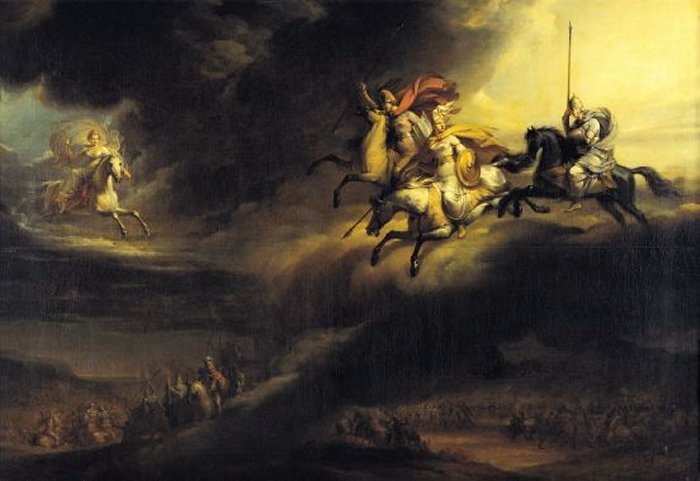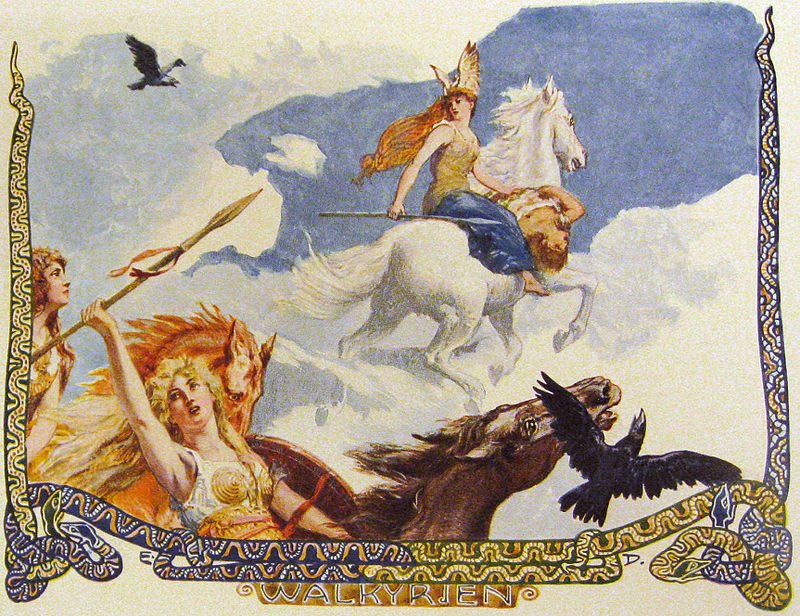Mysterious And Powerful Valkyries In Norse Mythology: The Choosers Of The Slain
A. Sutherland - AncientPages.com - In Norse mythology, the Valkyries were the choosers of the slain. The Valkyries were females riding on horses armed with helmets and spears. They would decide who would die in battle and drift over the battleground to find their prey.
Valkyrior rida till striden (1818) by Johan Gustaf Sandberg (Translation: Valkyries riding to the battle). Credit: Public Domain
Selecting among half of those who die in battle, the Valkyries bring their chosen to the afterlife hall of the slain, Valhalla, ruled over by the great god Odin.
The other half of the fallen warriors were taken to the goddess Freyja's afterlife field Folkvangr (Fólkvangr).
The goddess Freya had the first pick of the fallen Vikings.
The Valkyries Were Not Allowed To Be Seen By Humans
According to Norse mythology, the Valkyries were female virgins, and when a battle took place, there were usually between six and thirteen Valkyries at one time.
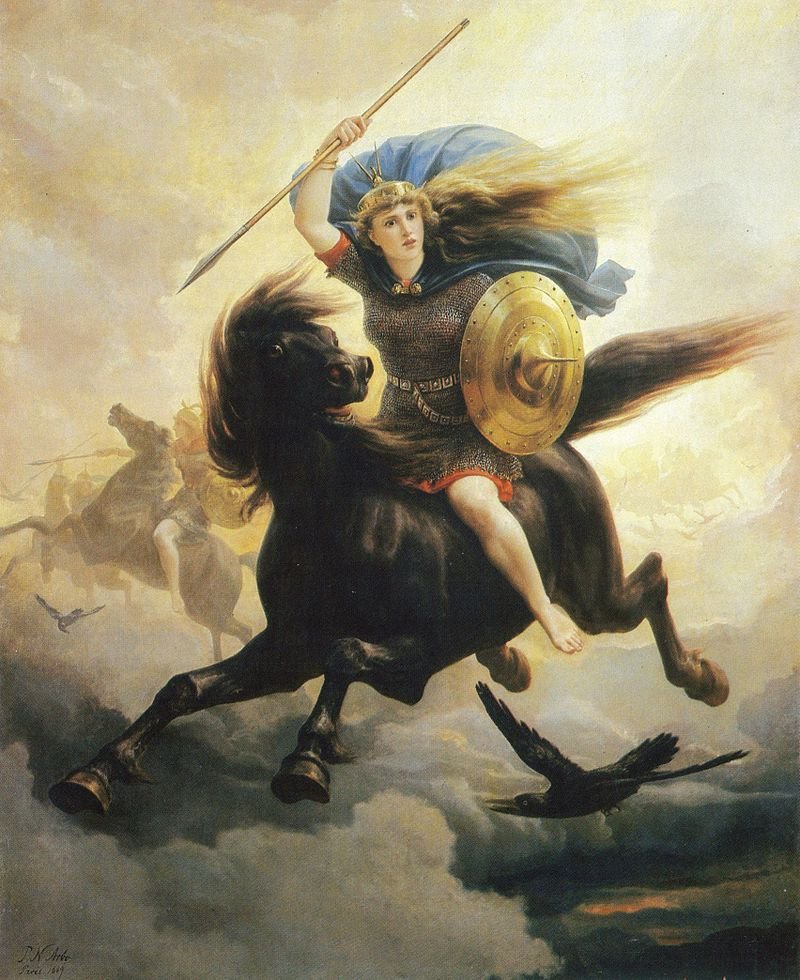 Valkyrie (1869) by Peter Nicolai Arbo. Credit: Public Domain
Valkyrie (1869) by Peter Nicolai Arbo. Credit: Public Domain
Some of the Valkyries had higher ranks and were treated with great respect. Some received unique gifts, and Odin allowed a few maidens to become swans. It allowed them to venture throughout Midgard and mingle with the humans. But if they were seen by the humans, not in their swan form, they would forever turn mortal and could never return to Valhalla.
These Valkyries were also attributed to ravens, as well as swans. These creatures were significant in battles within Old Norse literature, often choosing who would win and who would lose. They also took lovers, suffered punishments from Odin, and even were credited with changing the course of history throughout Viking mythology.
The Valkyries in ancient texts
The name originates from the Old Norse Valkyrja, "chooser of the slain."
Walkyrien (c. 1905) by Emil Doepler. Credit: Public Domain
Valkyries are attested in the Poetic Edda, a book of poems compiled in the 13th century from earlier traditional sources; the Prose Edda and Heimskringla (by Snorri Sturluson) Njáls saga, a Saga of Icelanders, all written in the 13th century. They appear throughout the poetry of skalds, in a 14th-century charm, and various runic inscriptions.
Archaeological discoveries reveal the importance of the Valkyries
Several Viking Age stylized silver amulets depicting women with long gowns, their hair pulled back, sometimes bearing drinking horns, have been discovered throughout Scandinavia. According to archaeologists and historians, the amulets were placed in Viking graves because they were thought to have protective powers.
The Tjängvide image stone from the island of Gotland, Sweden, features a rider on an eight-legged horse, which may be Odin's eight-legged horse Sleipnir, being greeted by a female, which may be a Valkyrie at Valhalla. The 11th-century runestone U 1163 features a carving of a female bearing a horn that has been interpreted as the Valkyrie Sigrdrífa handing the hero Sigurd (also depicted on the stone) a drinking horn.
Valkyries in other ancient cultures
Various theories have been proposed regarding the origin and development of the valkyries.
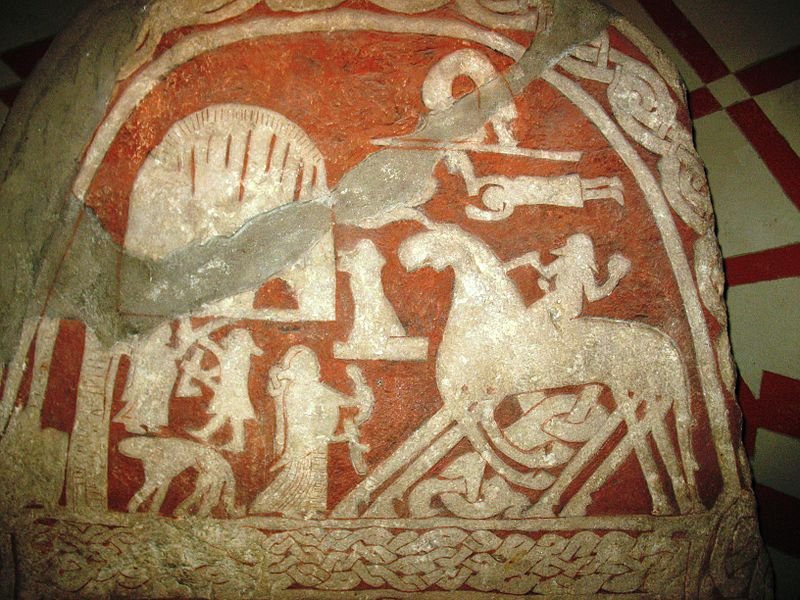 A female figure bears a horn to a rider on an eight-legged horse on the Tjängvide image stone in Sweden. Credit: Berig - CC BY-SA 4.0
A female figure bears a horn to a rider on an eight-legged horse on the Tjängvide image stone in Sweden. Credit: Berig - CC BY-SA 4.0
Valkyries are very similar to those that escort the dead to Hades or other forms of the afterlife in various mythologies throughout human history, particularly in Greek legends. It is interesting to note that common themes and figures occur throughout human history and across multiple cultures or societies.
Updated on August 27, 2024
Written by A. Sutherland - AncientPages.com Staff Writer
Copyright © AncientPages.com All rights reserved. This material may not be published, broadcast, rewritten or redistributed in whole or part without the express written permission of AncientPages.com
Expand for referencesMore From Ancient Pages
-
 Archaeologists Discover Previously Unknown Huge Galleries And Petroglyphs In Colorado
Archaeology | Dec 15, 2023
Archaeologists Discover Previously Unknown Huge Galleries And Petroglyphs In Colorado
Archaeology | Dec 15, 2023 -
 Neanderthals’ Lack Of Drawing Ability Could Explain Why Modern Humans Became Smarter
Archaeology | Feb 11, 2018
Neanderthals’ Lack Of Drawing Ability Could Explain Why Modern Humans Became Smarter
Archaeology | Feb 11, 2018 -
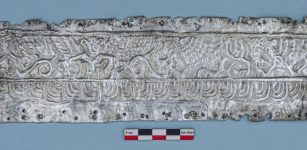 Unique Plate Of Winged Scythian Gods And Walking Griffons Discovered In Middle Don
Archaeology | Nov 19, 2021
Unique Plate Of Winged Scythian Gods And Walking Griffons Discovered In Middle Don
Archaeology | Nov 19, 2021 -
 Mystery Of The Faceless Creature – Ancient And Modern Sightings
Ancient Mysteries | Jun 19, 2018
Mystery Of The Faceless Creature – Ancient And Modern Sightings
Ancient Mysteries | Jun 19, 2018 -
 Who Built Massive Astronomically Oriented Buildings In The Most Ancient Times?
Civilizations | Nov 27, 2018
Who Built Massive Astronomically Oriented Buildings In The Most Ancient Times?
Civilizations | Nov 27, 2018 -
 How Large Was The ‘Giant’ Dunkleosteus Terrelli – Prehistoric King Of The Oceans?
News | Apr 10, 2023
How Large Was The ‘Giant’ Dunkleosteus Terrelli – Prehistoric King Of The Oceans?
News | Apr 10, 2023 -
 Late Neolithic Italians Mastered Complex Metal Technologies – New Study
Archaeology | Jan 22, 2020
Late Neolithic Italians Mastered Complex Metal Technologies – New Study
Archaeology | Jan 22, 2020 -
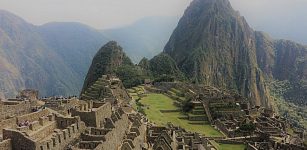 Two Inca Measurement Systems Calculated By Polish Architect
Archaeology | Nov 4, 2020
Two Inca Measurement Systems Calculated By Polish Architect
Archaeology | Nov 4, 2020 -
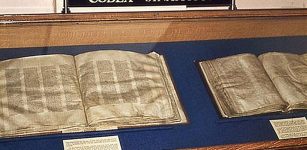 World’s oldest bible -The Codex Sinaiticus – to be displayed at the British Museum
News | Sep 1, 2015
World’s oldest bible -The Codex Sinaiticus – to be displayed at the British Museum
News | Sep 1, 2015 -
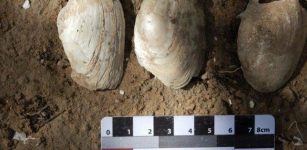 Aboriginals Inhabited South Australia 29,000 Years Ago – New Study
Archaeology | Jul 15, 2020
Aboriginals Inhabited South Australia 29,000 Years Ago – New Study
Archaeology | Jul 15, 2020 -
 Smuggled Ancient Egyptian Artefacts Finally Arrive Home From Italy
Archaeology | May 16, 2023
Smuggled Ancient Egyptian Artefacts Finally Arrive Home From Italy
Archaeology | May 16, 2023 -
 Mysterious Yamacutah – A Sacred Native American Indian Shrine
Artifacts | Sep 18, 2020
Mysterious Yamacutah – A Sacred Native American Indian Shrine
Artifacts | Sep 18, 2020 -
 On This Day In History: Battle Of King’s Mountain Was Fought – On Oct 7, 1780
News | Oct 7, 2016
On This Day In History: Battle Of King’s Mountain Was Fought – On Oct 7, 1780
News | Oct 7, 2016 -
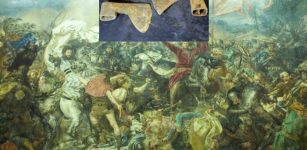 600-Year-Old Axe Heads Used In The Battle Of Grunwald Found in Poland
Archaeology | Sep 1, 2020
600-Year-Old Axe Heads Used In The Battle Of Grunwald Found in Poland
Archaeology | Sep 1, 2020 -
 Who Or What Made These Mysterious Holes At The Bottom Of The Atlantic Ocean?
News | Mar 23, 2023
Who Or What Made These Mysterious Holes At The Bottom Of The Atlantic Ocean?
News | Mar 23, 2023 -
 Strange Ancient Artifact Found In New Jersey May Be Evidence Of A Long-Lost Advanced Civilization
Featured Stories | Jun 27, 2024
Strange Ancient Artifact Found In New Jersey May Be Evidence Of A Long-Lost Advanced Civilization
Featured Stories | Jun 27, 2024 -
 Has The Mystery Of The Lost Trading Ship Zuytdorp Been Solved?
Archaeology | Dec 11, 2024
Has The Mystery Of The Lost Trading Ship Zuytdorp Been Solved?
Archaeology | Dec 11, 2024 -
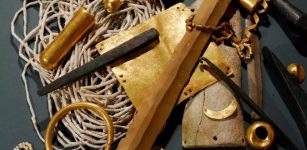 DNA Evidence For Early Contact Between Farmers And Pastoralists In Black Sea Region
Archaeology | Jul 20, 2023
DNA Evidence For Early Contact Between Farmers And Pastoralists In Black Sea Region
Archaeology | Jul 20, 2023 -
 Mysterious 3,000-Year-Old Underwater Urartu Castle Discovered
Archaeology | Nov 22, 2017
Mysterious 3,000-Year-Old Underwater Urartu Castle Discovered
Archaeology | Nov 22, 2017 -
 First Chinese Murals Unearthed In Shimao Ruins Are Over 4,000 Years Old
Archaeology | Aug 22, 2015
First Chinese Murals Unearthed In Shimao Ruins Are Over 4,000 Years Old
Archaeology | Aug 22, 2015

